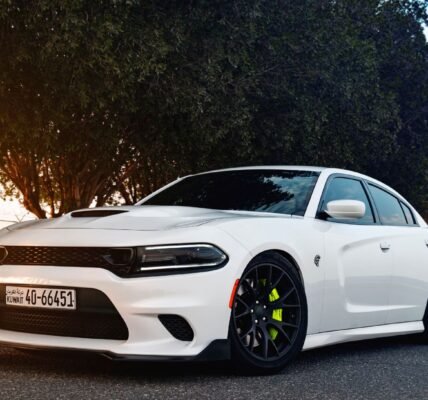The automotive industry is on the brink of a technological revolution. 5G and cars are at the forefront of this transformation. With the advent of 5G, vehicles will become smarter and more connected. The benefits of 5G extend beyond faster internet speeds. In fact, this new technology will revolutionize the way cars communicate with each other and with road infrastructure. The 5G and cars communication link will redefine safety, efficiency, and convenience on the road.
What Is 5G Technology?
5G stands for the fifth generation of wireless technology. It promises faster speeds, lower latency, and higher capacity than its predecessors. But 5G is more than just speed. It is designed to connect millions of devices simultaneously, paving the way for innovations in multiple industries, especially transportation. 5G and cars communication will lead to seamless integration between vehicles and their surroundings.
How 5G Will Transform Cars
5G technology will impact every aspect of transportation. From autonomous vehicles to enhanced safety systems, 5G and cars communication will bring about a new era of connected mobility.
- Vehicle-to-Everything (V2X) Communication
One of the key developments is Vehicle-to-Everything (V2X) communication. With 5G, cars will communicate not only with each other but also with infrastructure, pedestrians, and even traffic management systems. This type of communication will improve traffic flow, reduce accidents, and enhance overall driving experience. - Faster Data Exchange
5G will allow cars to send and receive vast amounts of data in real-time. This means that vehicles can share critical information, such as road conditions, traffic updates, and hazards, within milliseconds. The speed of 5G and cars communication will enable quick decision-making, which is vital for autonomous vehicles. - Enhanced Safety Systems
Safety is a major concern for drivers and manufacturers alike. With 5G and cars, vehicles will be able to detect and respond to potential dangers more effectively. For example, if a car ahead encounters a sudden stop, your car will receive this information instantly and can adjust its speed to avoid a collision.
The Role of 5G in Autonomous Driving
Autonomous vehicles (AVs) are another area where 5G and cars communication will make a significant impact. For AVs to function safely, they must process massive amounts of data from their environment. This includes real-time information about road conditions, nearby vehicles, and pedestrians.
- Low Latency for Real-Time Response
For autonomous vehicles, low latency is crucial. With 5G, the delay in data transmission will be reduced to milliseconds. This means AVs can make decisions quickly and accurately, ensuring safer navigation on the road. The connection between 5G and cars communication will be the backbone of autonomous driving, allowing AVs to react in real-time to any situation. - Cloud-Based Decision Making
5G technology will also enable cloud-based decision-making. Instead of relying solely on onboard systems, autonomous cars can access cloud data in real time. This allows the vehicle to make more informed decisions based on current traffic conditions or updates from other cars. 5G and cars communication will lead to a more efficient, intelligent driving experience.
Improving Traffic Management with 5G
Traffic congestion is a global problem. However, 5G and communication of car will help ease traffic flow by enabling smarter traffic management systems. These systems will use real-time data from connected cars to optimize traffic signals, reduce bottlenecks, and ensure smoother movement across cities.
- Smart Traffic Signals
With 5G and cars communication, traffic lights can adjust their timing based on real-time traffic data. This means that if a large number of vehicles are approaching an intersection, the lights will stay green longer to accommodate the flow. Such smart signals will improve traffic efficiency and reduce travel time. - Vehicle Platooning
5G will enable vehicle platooning, where a group of cars travels closely together at high speeds, coordinated by connected systems. This technique reduces fuel consumption and enhances road capacity. 5G and cars communication will allow vehicles to maintain precise distances from each other, improving fuel efficiency and safety. - Dynamic Routing
In the future, 5G and cars communication will allow for dynamic routing, where vehicles receive real-time route adjustments based on traffic conditions, accidents, or road closures. This will optimize driving routes, reduce congestion, and ensure a faster, more efficient journey for drivers.
Smart Cities and 5G-Enabled Cars
The rise of smart cities will go hand-in-hand with 5G and communication. Smart cities use data and technology to improve the quality of life for residents, including the way people move around. 5G and cars communication will allow vehicles to interact seamlessly with city infrastructure, making transportation smarter and more efficient.
- Connected Infrastructure
With 5G, roads, bridges, and parking lots will become part of the connected ecosystem. For example, parking sensors can send real-time data to cars, helping drivers find available parking spots faster. 5G and cars communication will enable this level of connectivity, making city navigation more convenient. - Pedestrian Safety
5G will also improve pedestrian safety in smart cities. With 5G and cars communication, vehicles will be able to detect pedestrians and cyclists even if they are out of sight. This capability will significantly reduce accidents and make roads safer for everyone. - Environmental Impact
The environmental benefits of 5G and cars communication cannot be overlooked. By optimizing traffic flow and reducing congestion, vehicles will emit fewer pollutants. Smarter driving patterns, made possible by 5G, will contribute to cleaner, more sustainable urban environments.
Challenges Facing 5G in the Automotive Industry
While the potential of 5G and communication of car is clear, there are challenges to overcome before it becomes widespread.
- Infrastructure Development
Rolling out 5G infrastructure on a large scale requires significant investment. In many regions, the necessary 5G infrastructure does not yet exist. Governments and private companies must collaborate to build the network that will support 5G and cars communication. - Data Security and Privacy
With greater connectivity comes the need for robust data security. 5G and cars communication will involve the exchange of massive amounts of sensitive data. Ensuring that this data is protected from cyberattacks will be crucial to gaining public trust. - Interoperability
To fully realize the benefits of 5G and cars communication, vehicles from different manufacturers must be able to communicate with each other and with infrastructure. Standardization will be key to making sure that all vehicles can integrate seamlessly within the 5G ecosystem.
The Future of 5G and Cars
The future of 5G and cars communication is bright. As 5G networks expand and improve, the automotive industry will continue to innovate. From enhanced safety to smarter city navigation, the combination of 5G and connected vehicles will revolutionize the way we move.
- Widespread Adoption of Autonomous Vehicles
With 5G and cars communication, autonomous vehicles will become more reliable and safer, leading to their wider adoption. As the technology matures, we can expect to see more driverless cars on the road, transforming transportation as we know it. - Collaborations with Tech Companies
Tech companies and automakers are already collaborating to explore the full potential of 5G and cars communication. These partnerships will accelerate the development of new technologies, bringing us closer to a future of smart, connected transportation.





